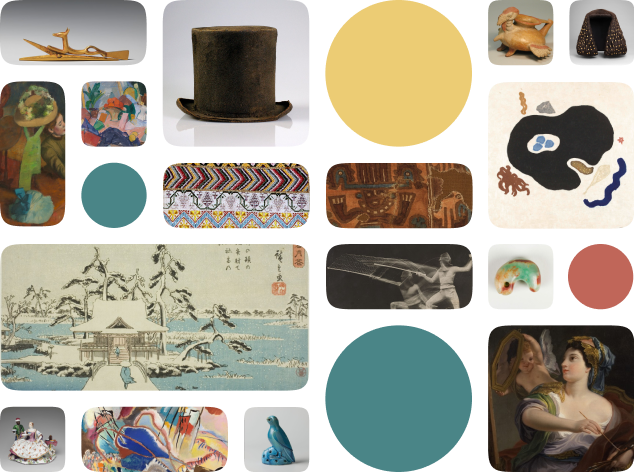Gus-da-wa-sa (turtle rattle)
Creator Name
Cultural Context
Date
Source
About the Work
Northeastern and Southeastern Native American tribes developed turtle shells into instruments. Hollowed-out shells were filled with river pebbles, animal teeth, seeds, or other small objects.
Handheld rattles, such as this one from the Iroquois, are traditionally used by medicine men. Its handle is carved to resemble a snake. In Iroquoian cosmology, the turtle carries the Earth on its back and snakes appear as monsters. Therefore, the rattle holds great spiritual significance.
Today rattles are made from tin cans and other modern materials.
Handheld rattles, such as this one from the Iroquois, are traditionally used by medicine men. Its handle is carved to resemble a snake. In Iroquoian cosmology, the turtle carries the Earth on its back and snakes appear as monsters. Therefore, the rattle holds great spiritual significance.
Today rattles are made from tin cans and other modern materials.
Metropolitan Museum of Art Object Description
Gus-da-wa-sa
Work details
"--" = no data available
Title
Creator
Worktype
Cultural Context
Material
Dimensions
Technique
--
Language
--
Date
Provenance
Style Period
--
Rights
Inscription
--
Location
Source
Subjects
Topic
--
Curationist Contributors
Related Content
All Works in Curationist’s archives can be reproduced and used freely. How to attribute this Work:
Unknown, Gus-da-wa-sa, 19th century. Metropolitan Museum of Art. Handheld rattles are traditionally shaken by medicine men during ceremonies, dances, and rituals. Public Domain.
Help us improve this content!
Let our archivists know if you have something to add.
Save this work.
Start an account to add this work to your personal curated collection.
